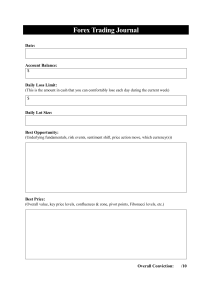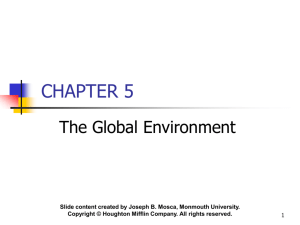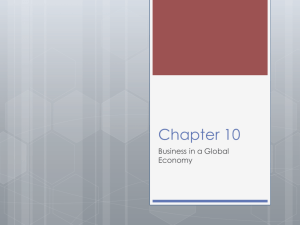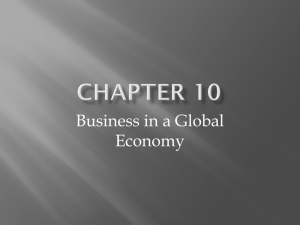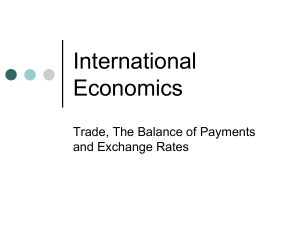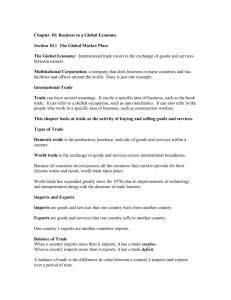AP Macroeconomics Review Session One
advertisement
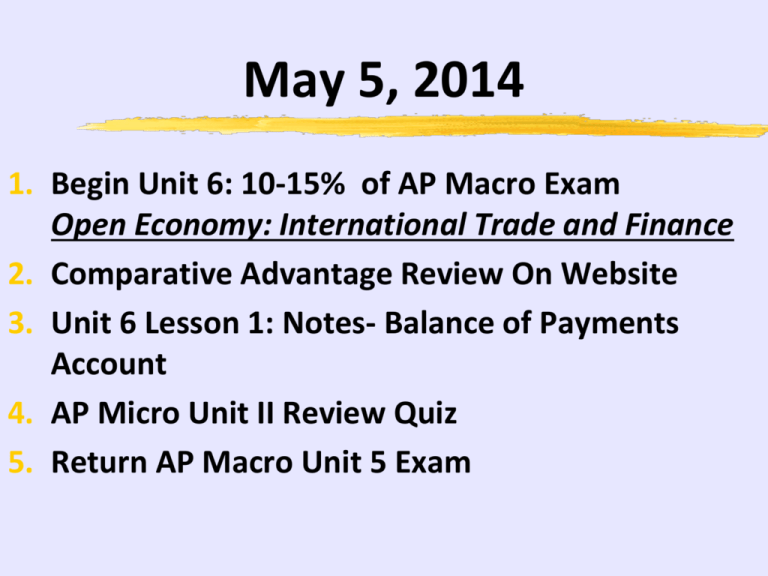
May 5, 2014 1. Begin Unit 6: 10-15% of AP Macro Exam Open Economy: International Trade and Finance 2. Comparative Advantage Review On Website 3. Unit 6 Lesson 1: Notes- Balance of Payments Account 4. AP Micro Unit II Review Quiz 5. Return AP Macro Unit 5 Exam Balance of Payments Accounts • • • • • • • • Balance of Payments Account: The sum of all transactions between U.S. residents and residents of all foreign nations during some period of time. 1. Current Account: Records U.S. exports and U.S. imports of goods and services. Also includes net investment income (US earnings on capital investment abroad MINUS foreign earnings from capital invested in the US) and net transfers (foreign aid sent to other countries, funds immigrants send to family abroad, pensions paid to U.S. citizens living abroad) 2. Financial (Capital) Account: Records the purchase and sale of assets domestically and abroad. Examples: US investors buy a hotel in Tokyo or stock in a Swedish Company; Foreign investors buy a factory in the US or stock in US Company. THE BALANCE ON THE CURRENT ACCOUNT AND THE BALANCE ON THE FINANCIAL ACCOUNT MUST ALWAYS SUM TO ZERO! Credits: Transactions for which the U.S. receives income (i.e. exports) Debits: Transactions that the U.S. must pay for: (i.e. imports) International Trade • Comparative Advantage and Specialization allow for economic growth and efficiency. • NAFTA, WTO, EU, etc: Free trade areas that promote international trade. • Trade barriers like quotas and tariffs can create more economic loss than benefits. • Quota: Limit on # of imports allowed into a country • Tariff: Tax on Imports May 7, 2014 • FOREX Market Notes and Activities 7-3 and 7-4 • AP Micro Unit III Review Quiz: Theory of the Firm The FOREX • When goods are purchased from another country, they must be paid for in that country’s currency (so exporters can spend the currency ) • So international trade requires that currencies also be traded. • When Americans buy foreign goods, US Dollars are supplied in the FOREX. • When foreigners buy US goods, US Dollars are demanded in the FOREX. • The value of a foreign nation’s currency in relation to your own currency is called the exchange rate (equilibrium price at which currencies are traded) FOREX An increase in the value of a currency is called appreciation. A decrease in the value of a currency is called depreciation. Changes in a nation’s monetary and/or fiscal policies affects its exchange rates and its’ trade by affecting the interest rates, price level, etc. 6
